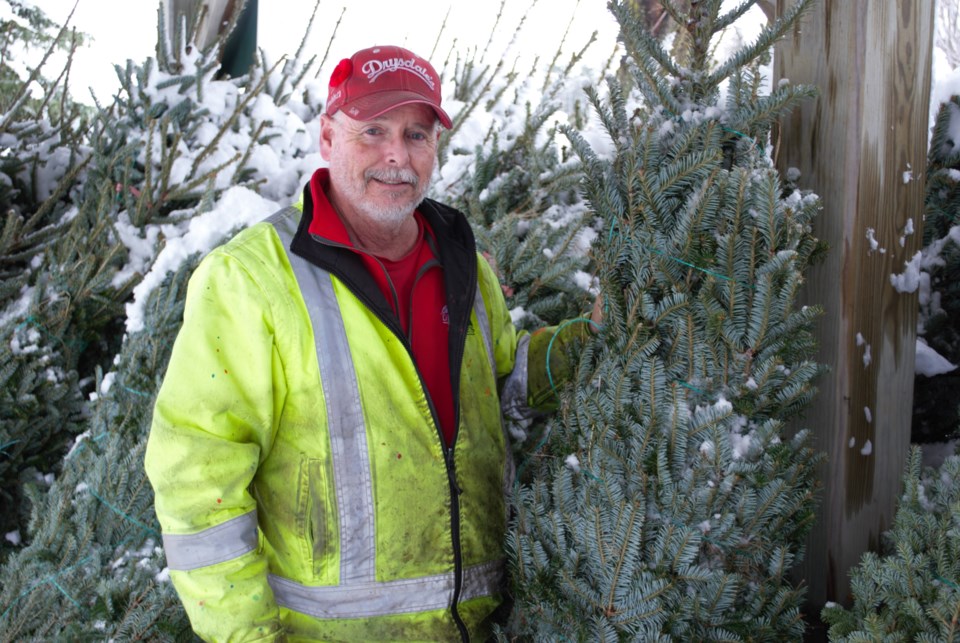For Doug Drysdale, there’s no debate.
Real Christmas trees are the only option for an authentic Christmas experience.
“I use the analogy that, if your boyfriend gave you artificial flowers for your birthday, how would you react?” says Drysdale.
While Drysdale is passionate about his love of real Christmas trees, that passion extends to the importance of supporting local businesses.
“The Christmas tree that you’re buying now and the industry in Ontario – not only does it provide thousands of (local) jobs... there’s a lot of stuff that happens with real Christmas trees that feed the local economy,” he says. “Artificial trees, none of them are made in North America anymore.”
The Drysdale farm was started in 1945, with Doug Drysdale being the third generation to run the farm.
Drysdale estimates that he sells roughly 15,000 trees across Ontario yearly.
“There’s almost no carbon footprint on a (real) Christmas tree,” says Drysdale. “It takes about 10 to 12 years to grow a (six-foot) Christmas tree. During those 10 to 12 years, it’s wildlife habitat, it’s erosion control, it’s oxygen-producing, there’s a lot of good things that happen.”
Drysdale says the first and second weekends in December are the busiest time of the year for the farm, so he’s ramping up to be busy.
“We don’t sell as many as we used to. We do other stuff as well, like landscape trees,” says Drysdale. “The most I ever cut in one year, in 1992 I cut 87,000. Compared to that year, it’s not that much.”
While the Barrie fire department is staying out of the debate over whether real or artificial Christmas trees are better, they are offering safety tips regardless of which side of the fence you sit on.
“Both are safe to have as long as you follow a few safety rules. I wouldn’t choose one over the other,” says Barrie fire prevention officer Samantha Hoffmann.
For a real tree, when going to purchase, Hoffmann recommends banging the stump on the ground to see if any needles fall off.
“If the needles fall off, that’s a sign it could be dry,” she says.
The base of a real Christmas tree also has a resin on it. According to Hoffmann, a fresh cut should be made on the bottom of the stump before putting the tree in water so the water can be properly absorbed.
“When looking at the needles, they should bend, not snap off,” adds Hoffmann.
If you choose to go with an artificial tree, look for “fire resistant” on the label.
“If it catches on fire, it won’t burn as hot or as long,” she says.
Whether choosing real or artificial, some rules are consistent across the board to make sure you have a safe holiday.
“Don’t put it near heat sources. Don’t put it over a vent. Don’t put it too close to the fireplace or electrical outlets,” she says. “A lot of people will block their back door or their patio door (with a tree)... thinking they’re not going out in the backyard in the winter. But you have to keep in mind that’s your second way out if there’s ever an emergency.”
With lighting, LED options are safer because they run cool with the added bonus of saving electricity, says Hoffman.
“Don’t use outdoor lights indoors or indoor lights outdoors and check the cords. If there’s any damage or fray, replace them,” she says, adding that no more than seven connected strands should be used on a tree.
For more holiday safety tips from Barrie Fire and Emergency Services, click here.



